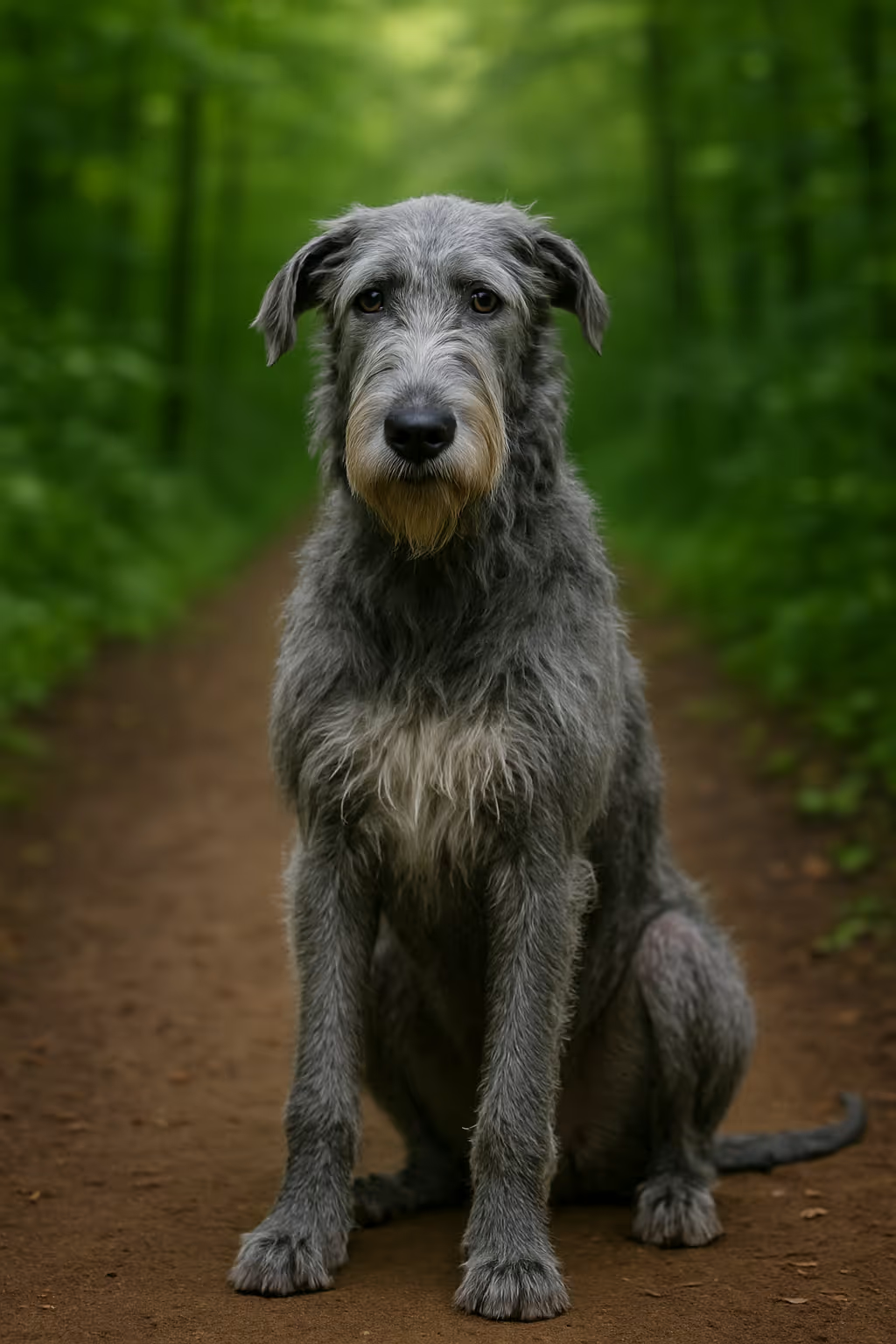The Irish Wolfhound is a gentle giant—dignified, kind, and breathtakingly tall. Calm indoors and athletic outdoors, it suits spacious homes devoted to large‑breed care and training.

Ancient Irish coursing hounds were famed in early literature and used to hunt wolf and elk. The modern breed was revived in the late 19th century—most notably by Captain G.A. Graham—by tapping remaining Irish hounds and related breeds. Today the Wolfhound is recognized worldwide for size, nobility, and a tender heart.
Well-balanced with hallmark breed features.
Coat is easy with regular tidying; focus on nails and furnishings.
Moderate daily needs; protect growing joints.
Sweet‑natured and sensitive—train with kindness and clarity.
Giant‑breed feeding and bloat precautions are paramount.
Work with breeders who screen for heart and orthopedic issues.
Seek ethical, giant‑breed‑savvy kennels or consider rescue for calmer adults.
Are Irish Wolfhounds good apartment dogs?
No—best with space and secure access to exercise.
Do they shed?
Moderate; weekly brushing manages coat.
How trainable?
High with gentle, consistent methods.
Good with kids?
Often very gentle; supervise due to size.
How much do they eat?
Significant—budget for giant‑breed nutrition and vet care.